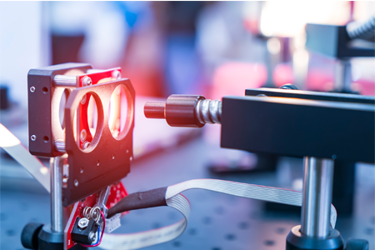Subsurface Damage

Every optical element, regardless of the precision of its manufacturing, possesses subsurface damage beneath its surface, including cracks, residual stresses, contaminants, and voids. These imperfections can arise during the manufacturing process or be inherent to the material's quality. When these optics are illuminated with lasers, subsurface damage can cause increased absorption and scattering of light, generating heat that results in reduced throughput and potentially system failure under high-power laser conditions or significant mechanical stress.
The grinding and polishing stages leave subsurface damage that can extend from 0.1 micrometers to several microns below the polishing redeposition layer, known as the Beilby layer. This layer forms when the optic’s surface reflows over fine scratches during polishing due to chemical reactions. The goal of each grinding and polishing step is to remove sufficient material to mitigate the deepest subsurface damage from prior steps, progressively reducing damage depth with each operation. However, this also leads to diminishing returns as each subsequent step removes less material.
Impurities can become trapped within the redeposition layer unless specialized laser-grade polishing techniques are employed. While polishing with finer grits can decrease subsurface damage, it also lengthens the polishing time, thereby increasing costs. An effective polishing process for laser optics aims to eliminate deep subsurface damage, whereas an ineffective one merely conceals it under the Beilby layer, potentially jeopardizing optical performance in critical applications.
Get unlimited access to:
Enter your credentials below to log in. Not yet a member of Photonics Online? Subscribe today.
